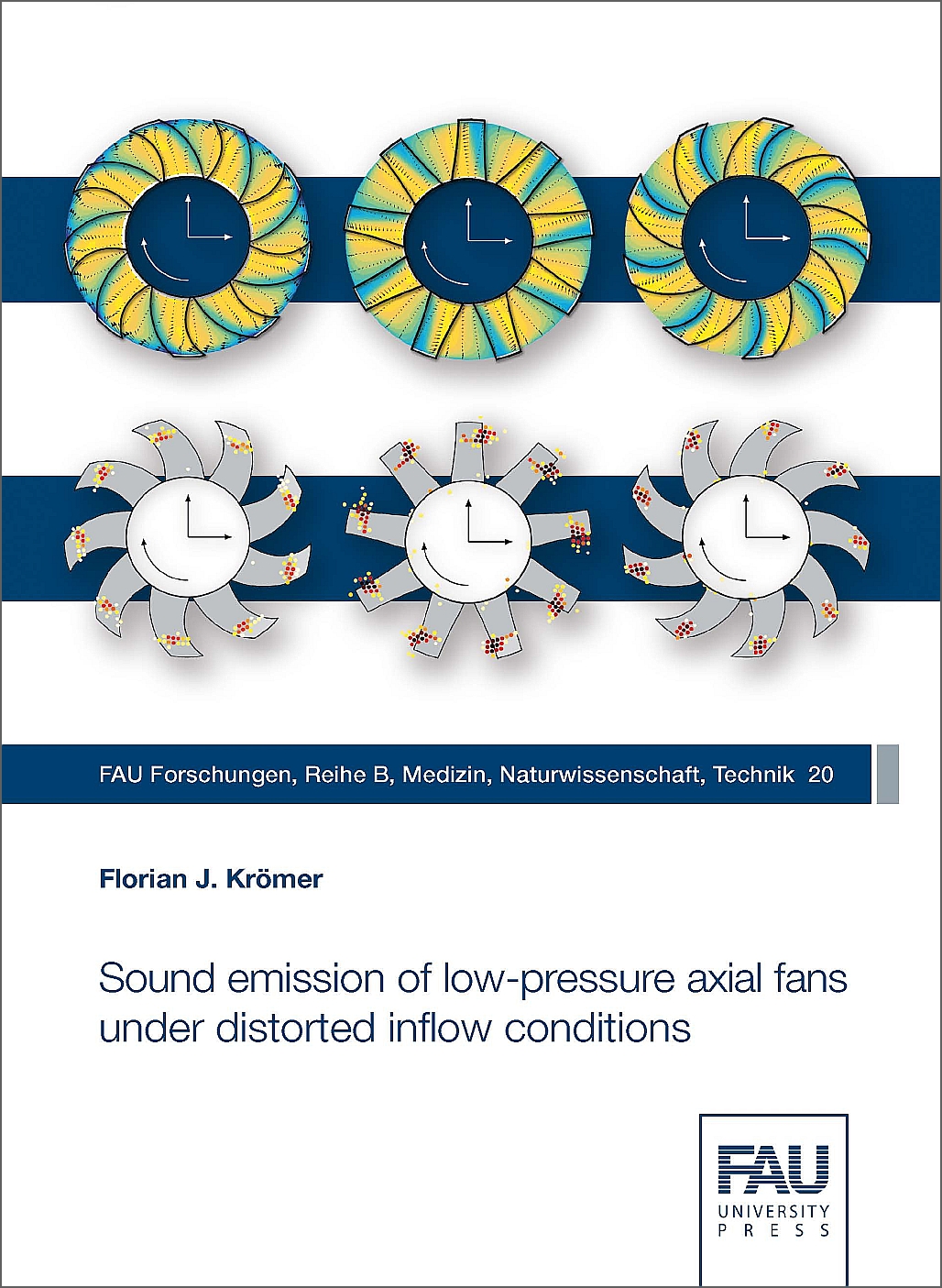Description
The sound emission of low-pressure axial fans is substantially influenced by the fan blade geometry and the inflow conditions, induced by the fan installation system. However, the combined impact of these parameters has not yet been comprehensively investigated or understood. Hence the motivation for this thesis was to undertake a compact, systematic experimental study on the sound emission of axial fans with different blade geometry parameters under distorted inflow conditions.
The impact of the fan blade design was investigated on the basis of nine fans with different blade loading distributions and different fan blade skew, but otherwise identical geometric parameters. Additionally, the effectiveness of leading edge serrations in reducing axial fan noise was examined with a parametric study of a generic flat-plate fan and eleven sets of fan blades with leading edge modifications that included single-sine (sinusoidal), double-sine and random amplitude leading edge serrations.
The inflow conditions were altered to incorporate either an increased inflow turbulence intensity or an inhomogeneous inlet velocity profile. These conditions were realised by grids - three turbulence grids and two velocity gradient grids - that were mounted upstream of the fans.
A large increase in the sound radiation with elevated tonal and broadband components was observed with the modified inflow conditions. Thereby, the sound emission of the forward-skewed fans showed a greater susceptibility for distorted inflow conditions than that of the backward-skewed fans. It was found that owing to the fan blade shape, the forward-skewed fans are prone to higher unsteady blade forces and increased pressure fluctuations on the fan blade leading edges. These factors determine the tonal and broadband sound radiation. For the backward-skewed and unskewed fans, dominant subharmonic components, originating from flow phenomena in the tip region, occurred under both free and distorted inflow conditions.
All types of leading edge serrations achieved a sound reduction compared with the reference fan with straight leading edges - for both free and distorted inflow conditions. The greatest reduction was observed for the sinusoidal leading edges, followed by the double-sine and random amplitude leading edges. The reduction was mainly dependent on the serration wavelength rather than the serration amplitude: the smaller the leading edge wavelength, the greater was the overall sound reduction.
Overall, the investigations showed that the sound emission of low-pressure axial fans is highly dependent on the combined impact of the fan blade geometry and the inflow conditions. The findings contribute to a better understanding of the sound generation mechanisms in axial fans and show means for designing low-noise fans in complex cooling or ventilation systems.


Reviews
There are no reviews yet.